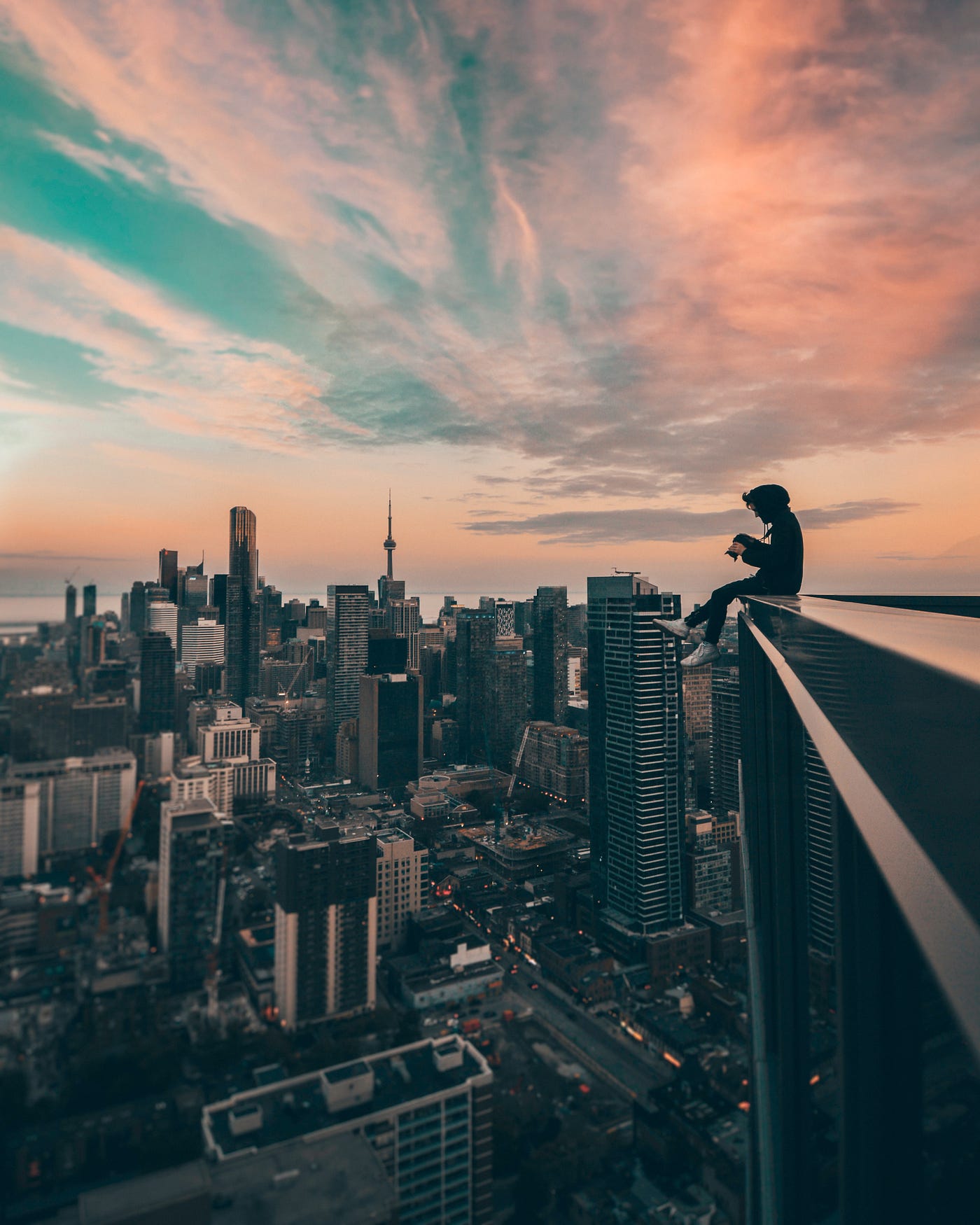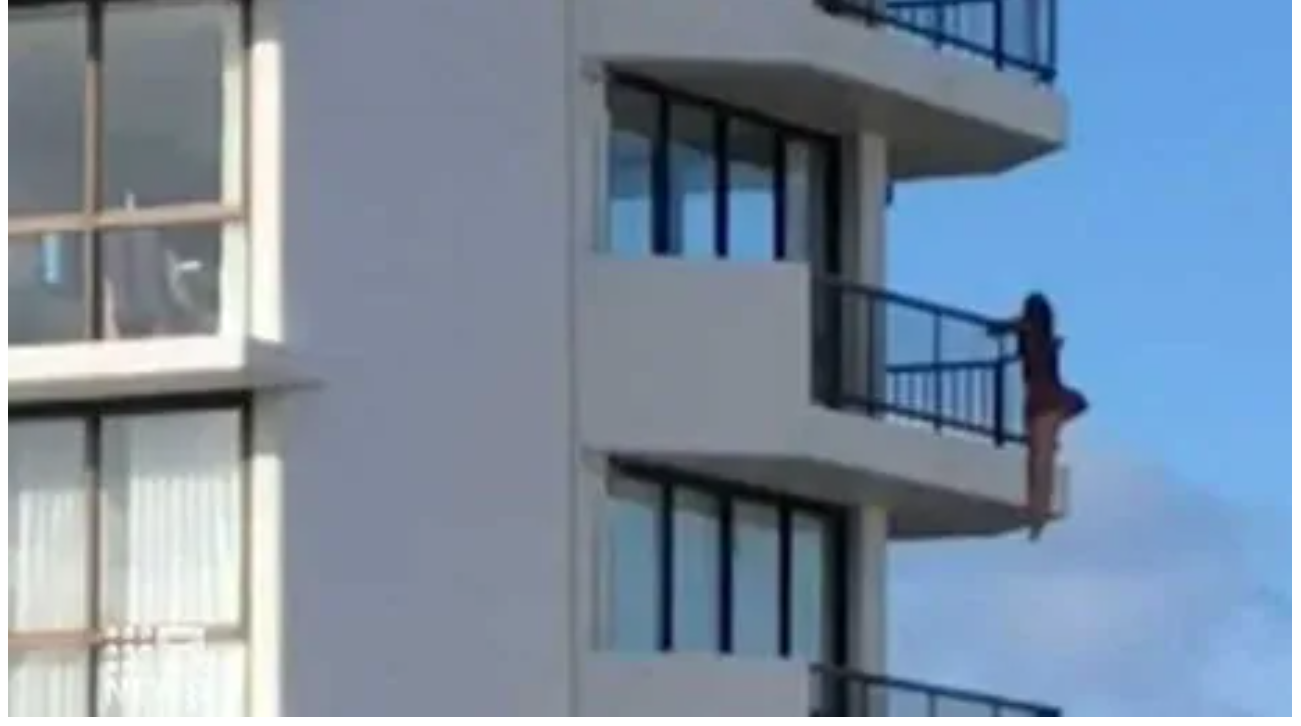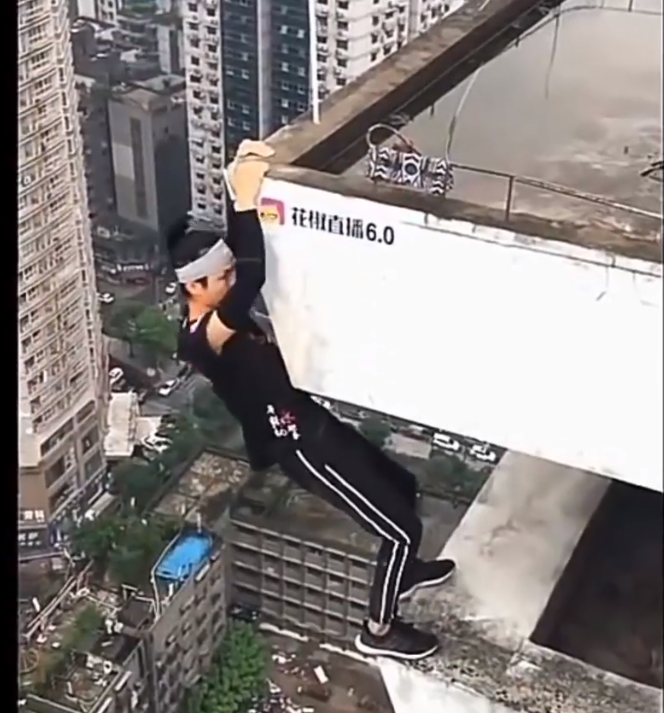People Who Die Taking Pictures of Themselves
People Are Dying For Social Media — Literally
Deaths from selfies and video stunts are increasing as is our self-obsession.
![]()

Girl dangles from balcony to capture the perfect photo.
I am used to seeing stupidity as I check the online news. I rely on stupidity to give me ideas for articles. And this one was right up there. Just take a look at the accompanying photo.

This girl is hanging off a balcony 11 stories up. Because she wants the perfect Instagram shot. She did successfully achieve two things: she went viral, and she didn't die. And it seems that is the only aim for some Social Media users.
It's a trag i c story when there is a Wikipedia page listing all the selfie-related injuries and deaths.
#firstviralhit
It began in 2011 when Canadian Tom Ryaboi dangled his feet over the edge of a tall building in Toronto and took a picture straight down. He posted it on Flickr, Reddit, and 500px.
The caption underneath his image was "I'll make you famous," and it proved to be prophetic. A day after he posted it, he "had 500 emails in (his) inbox, including requests for interviews by BBC, RTL, and National Geographic USA." It had gone viral, and soon there were hundreds of copycats.
A craze was born.
#killfie
There seems to be no end to the list of ways people have died trying to take the ultimate selfie for social media. In fact, there are so many that the term killfie has been coined. A killfie is a selfie you take in a risky or astonishing position at a dangerous location.
A quick Google search will list a sad and long list of people who have died in the name of Social Media. There are many cases of people falling while posing for photos. Falling from cliffs, Macchu Picchu, and of course skyscrapers.
Take the case of 18-year-old Anna Urso who tried to create the"ultimate selfie" for Facebook. Urso lay down on the roof of a stationary train car, but when she stood up to pose, she hit an overhead live wire that shocked her with 27,000 volts and immediately burst into flames.
Perhaps the most famous is Wu Yongning, who fell to his death during a Livestream. His plummet from the roof of a 62 story skyscraper was captured on video. I have chosen not to post the video, but below is a screenshot of Wu prior to falling.

The video of his fall was watched more than 15 million times, proving that even a tragic death can go viral. It was hypocrisy at its best. People were criticizing Wu for his dangerous stunt yet watching the video and sharing it. The State-run paper, China Daily, was critical of social media, blaming it for Wu's death. They wrote:
"Had Wu not been so popular on live-streaming apps, he might not have died. Some of them try to hype things up with obscene and dangerous things, and their purpose is to attract more eyeballs and make a profit. It is time we ended this."
For one of the rare times in my life, I find myself agreeing with China — it is time we end this.
#whydowedothis?
According to Sarah Diefenbach, a consumer psychology professor and the lead author of "The Selfie Paradox," we take selfies "for all kinds of reasons: to communicate with people we love, to build self-esteem, to curate our self-image, to chronicle our personal histories, and — increasingly — to build our personal brands."
To me, the key point she mentions is to build our personal brand — isn't that what Social Media is all about? Showing the world what we want them to think our lives are like? Even if it means risking our lives for the photo.
"The opportunity for a photo supersedes personal safety at that moment. It's almost like you get possessed, " says Dr. Aaron Balick, author of "The Psychodynamics of Social Networking."
The obsession with the killfie is perhaps best summed up by University of Western Ontario sociology professor Anabel Quan-Haase:
"Social media is an attention economy where there are hundreds of thousands of pictures, so young people are often willing to take risks to have a shot that will catch others' attention. From that standpoint, social media can create greater risk-taking and blur the boundary of when that risk is still healthy and when it has gone one step too far."
And people will do anything to capture attention.
#weneedprotection
Sadly, it seems we need protection from ourselves. As the obsession with selfies and outrageous stunts continues unabated, it seems we need rules to stop them.
Recently an Irish Minister for Health, Jim Daly, suggested installing selfie seats around the country. These would be located in prime tourist spots and provide safe, stable places for people to sit while taking selfies. Places like the Cliffs of Moher where tourists have fallen and died while trying to capture the perfect photo.
Not only is it a sensible suggestion, but it could also be a shrewd marketing move for Tourism Ireland. As Daly said:
"It will also prove to serve as one of the most innovative marketing tools to showcase Ireland abroad. Tourists, being time-sensitive, like to know where to go and what to do. They also like clear shots rather than grainy images on their social media and Instagram."
Could this be the way forward at all tourist sites? Will we see a Sit Here for Instagram seat at Macchu Picchu?
In India, there are more selfie deaths than anywhere in the world. The popular tourist spot of Goa has taken the step to create 24 "no selfie zones" along cliffs, popular beaches, and swimming holes to try to stop people from dying in an attempt to capture the ultimate selfie. I'm not confident that a sign will deter the majority; it will probably just encourage people to take a dangerous selfie with the sign included.
Maybe the only solution is Photoshop. Influencers already use it to make themselves look fabulous. Can't they just use it to put themselves virtually into photos? It's much safer.
#noendinsight
Just three weeks ago, in my home state of Victoria in Australia, a 38-year-old woman died trying to take a picture at Boroka Lookout in Grampians National Park. Balancing on a rock, she fell to her death as the photo was being taken. The location's geotag on Instagram shows thousands of photos from the cliff edge. Most of which have people posing perilously close to the drop. There is even a video of someone performing a backflip on the edge.
When asked whether her death was preventable, the local police minister said, "in the end, we can't rope off every part of Victoria. People have to take responsibility."

Ultimately we do need to take responsibility. And so does Social Media. For it has created a monster, and people are killing themselves in its name.
People Who Die Taking Pictures of Themselves
Source: https://bettermarketing.pub/people-are-dying-for-social-media-literally-dbcf6655f34
0 Response to "People Who Die Taking Pictures of Themselves"
Post a Comment